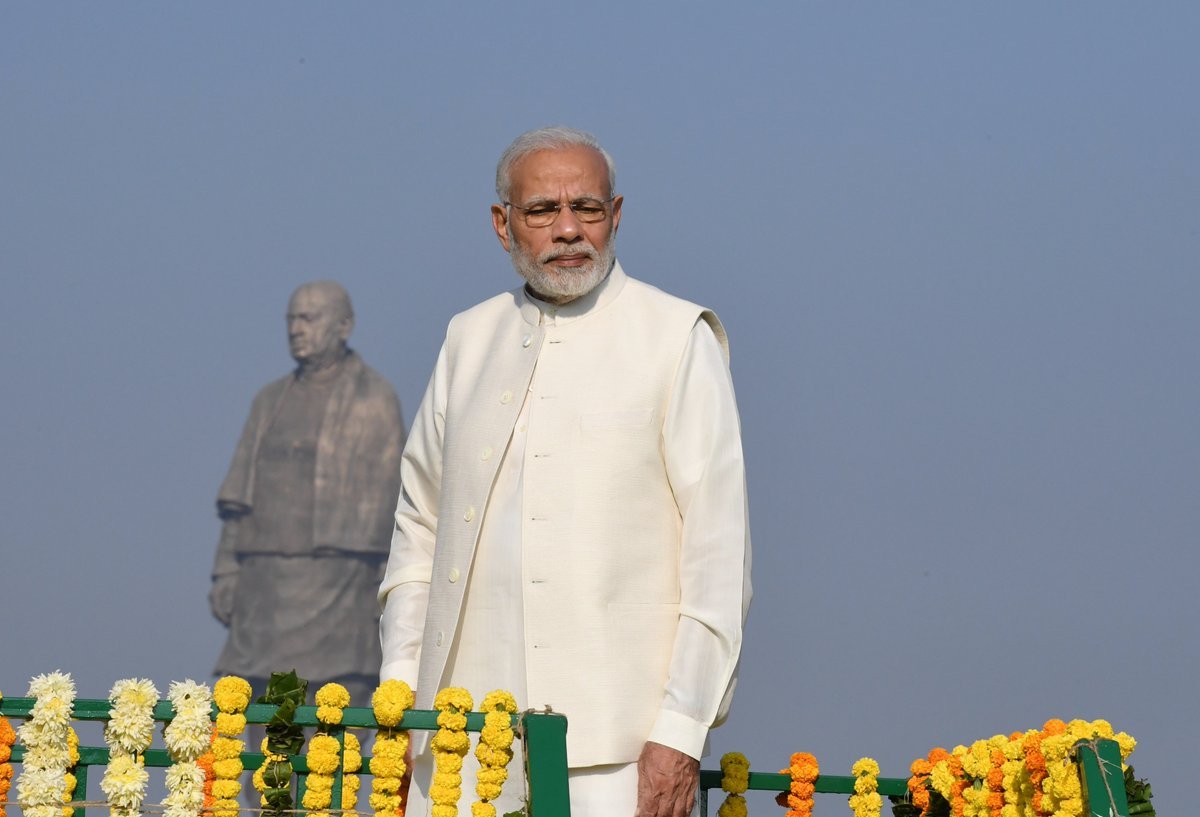THE Britons are having second thoughts about the financial assistance they give to India. The change of mind is prompted by the Statue of Unity which Indian Prime Minister Narendra Modi unveiled in the Gujarat state on October 31.
The bronze memorial of Sardar Patel, one of the heroes of India’s independence movement, is the world’s tallest statue — twice as tall as the Statue of Liberty. Patel, called the “Iron Man” and the “Bismarck of India”, united hundreds of small princely states to form a united India. Modi has spotted a big political capital in Patel whom India’s left-leaning political establishment never gave the importance he deserved.
No, Britons aren’t troubled by India celebrating a man who fought the British colonial regime. They are bothered by India splurging money on vanity projects instead of making wise use of it. Tory MP Peter Bone kicked off a storm with his comments on the Indian statue. “To take £1.1billion in aid from us and then at the same time spend £330 million on a statue is a total nonsense, and it is the sort of thing that drives people mad,” Bone said. In 2012, when construction started, the UK donated about 300 million pounds to India. In 2013, it donated 268 million, in 2014 278 million, and in 2015, 185 million, followed smaller amounts, according to Daily Mail.
Social media was abuzz with angry reactions to British taxpayer money being spent on Indian vanity projects. Though it appeared from various media reports that the statue was funded with the British financial aid, the British aid was meant specifically for other projects.
The British aid money was spent on projects such as promotion of women’s rights and solar panels and investment in low-carbon transport. When the statue’s foundations were being laid in 2014, 14,000 pounds of British aid was spent in the Gujarat state to ‘increase religious tolerance among young people’, according to a Mail report.
“It is up to them how they spend their money but if they can afford this statue, then it is clearly a country we should not need to be giving aid to,” Bone said.
Just as Indian economy grows and India asserts itself globally, India-UK relations are getting problematised, the statue controversy being a good instance. Once a British colony, India struggled with poverty for decades after its independence in 1947. The socialist state discouraged private enterprise and did little itself to improve
the economy.
Foreign aid was a significant part of India’s economy. However, things started changing after it liberalised its economy in 1991. Though it hasn’t entirely eradicated poverty or malnutrition, India is a resurgent economy today. In July this year, it emerged as the world’s sixth-largest economy in 2017 surpassing France. India’s gross domestic product reached $2.59 trillion, relegating France to the seventh position at GDP worth $2.58 trillion, according to the World Bank ranking.
At this pace, Indian economy is set to overtake that of the UK — its former colonial master — next year. The UK has a GDP of $2.62 trillion, which is just $25 billion more than that of India. However, that won’t put India in the league of developed countries given the persistence of its typical third-world problems, unlike its neighbour China which has already developed infrastructure comparable with that in the developed western countries.
Yet India no longer likes to be seen as a nation dependent on foreign charity. It is now a net giver of international aid; it gives more aid than it receives. And a Briton will find it illogical that the government keeps donating taxpayer money to a country set to overtake the UK in terms of GDP. Then why does the UK continue to give the aid and India keep on receiving it?
Financial assistance for developmental and social projects may not be the sole purpose behind the aid. Most likely, the aid buys the UK influence over India that can be put to many uses.
A report in The Telegraph in 2012 revealed that India tried to terminate the aid in 2011 but relented after the British begged them to keep taking the money. “The disclosure will fuel the rising controversy over Britain’s aid to India. The country is the world’s top recipient of British bilateral aid, even though its economy has been growing at up to 10 per cent a year and is projected to become bigger than Britain’s within a decade,” wrote Andrew Gilligan. He went on to reveal that the aid was a lever used by the UK to push a warplane deal with India. The reporter cited Development Secretary Andrew Mitchell saying that Britain’s aid to Delhi was partly “about seeking to sell Typhoon (the warplane)”.
“We do not require the aid,” Indian Finance Minister Pranab Mukherjee had said at that time. He said it was peanuts in India’s total development expenditure and India wanted to “voluntarily” give it up. According to the Telegraph report, a leaked memo showed an Indian diplomat proposing not to avail of any further DFID (the UK’s Department for International Development) assistance with effect from April 1, 2011 due to the negative publicity of Indian poverty promoted by DFID.








Comments
NOTE: The North Shore Daily Post welcomes your opinions and comments. We do not allow personal attacks, offensive language or unsubstantiated allegations. We reserve the right to edit comments for length, style, legality and taste and reproduce them in print, electronic or otherwise. For further information, please contact the editor or publisher, or see our Terms and Conditions.